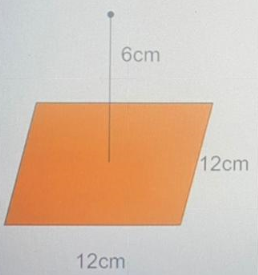Assertion (A): When two bodies are rubbed together body A acquires q1 and body B acquires q2 then q1+q2=0
Reason (R): Irrespective charge is enclosed by the surface, total flux through the surface is zero.
Both (A) and (R) are true and (R) is the correct explanation of (A).
Both (A) and (R) are true but (R) is not the correct explanation of (A).
(A) is true but (R) is false.
(A) is false and (R) is also false.
The correct Answer is:A
To solve the question, we need to analyze both the assertion (A) and the reason (R) provided.
1. Understanding the Assertion (A):
- The assertion states that when two bodies (A and B) are rubbed together, body A acquires charge q1 and body B acquires charge q2. It claims that q1+q2=0.
- This means that the charges are equal in magnitude but opposite in sign. If body A gains a positive charge q1, then body B must gain a negative charge q2=−q1.
2. Understanding the Reason (R):
- The reason states that irrespective of the charge enclosed by a surface, the total electric flux through that surface is zero.
- According to Gauss's law, the electric flux Φ through a closed surface is given by Φ=Qencϵ0, where Qenc is the total charge enclosed by the surface and ϵ0 is the permittivity of free space.
- If Qenc=q1+q2=0, then the total flux Φ through the surface is zero.
3. Combining the Assertion and Reason:
- Since q1+q2=0 as stated in the assertion, it follows that the total charge enclosed by any closed surface that contains both bodies A and B is zero.
- Therefore, according to Gauss's law, the total electric flux through that surface is also zero, which supports the reason provided.
4. Conclusion:
- Both the assertion (A) and the reason (R) are correct.
- Additionally, the reason correctly explains the assertion.
Final Answer:
Both assertion (A) and reason (R) are correct, and the reason is a correct explanation of the assertion.
---
- The assertion states that when two bodies (A and B) are rubbed together, body A acquires charge q1 and body B acquires charge q2. It claims that q1+q2=0.
- This means that the charges are equal in magnitude but opposite in sign. If body A gains a positive charge q1, then body B must gain a negative charge q2=−q1.
- The reason states that irrespective of the charge enclosed by a surface, the total electric flux through that surface is zero.
- According to Gauss's law, the electric flux Φ through a closed surface is given by Φ=Qencϵ0, where Qenc is the total charge enclosed by the surface and ϵ0 is the permittivity of free space.
- If Qenc=q1+q2=0, then the total flux Φ through the surface is zero.
- Since q1+q2=0 as stated in the assertion, it follows that the total charge enclosed by any closed surface that contains both bodies A and B is zero.
- Therefore, according to Gauss's law, the total electric flux through that surface is also zero, which supports the reason provided.
- Both the assertion (A) and the reason (R) are correct.
- Additionally, the reason correctly explains the assertion.
Both assertion (A) and reason (R) are correct, and the reason is a correct explanation of the assertion.
Topper's Solved these Questions
- SAMPLE PAPER 2BOOK - EDUCART PUBLICATIONCHAPTER - SAMPLE PAPER 2EXERCISE - SECTION-C
6 Videos
- SAMPLE PAPER 2BOOK - EDUCART PUBLICATIONCHAPTER - SAMPLE PAPER 2EXERCISE - SECTION-C
6 Videos
- SAMPLE PAPER 04 (SOLVED)BOOK - EDUCART PUBLICATIONCHAPTER - SAMPLE PAPER 04 (SOLVED)EXERCISE - SECTION-C
6 Videos
- SAMPLE PAPER 3BOOK - EDUCART PUBLICATIONCHAPTER - SAMPLE PAPER 3EXERCISE - SECNTION -C
6 Videos
Similar Questions
Knowledge Check
A closed surface is vacumm encloses charges −qand+3q. Another charge −2q lies outside the surface. Total electric flux over the surface is
AzeroB2q/∈0C−3q∈0D4π/∈0If charges q/2 and 2q are placed at the centre of face and at the corner of a cube, then the total flux through the cube will be
Aq2ε∘Bqε∘Cq6πε0Dq8ε∘
Find the flux of point charge q through the square surface ABCD as shown

View SolutionIf the radius of the Gaussion surface enclosing a charge q is halved, how does the electric flux through the Gaussion surface change?
View SolutionTwo charges q and 2q are placed at heights a/2 and a respectively from plane of the square surface ABCD. Then flux through the square surface is: 29 9 a a 2 В. C Center a D
View SolutionWhen two bodies A and B are rubbed, they acquire charge by friction, If the charge on A is negative, then the charge on B is _______.
View SolutionTwo charges q1andq2 are placed at (0,0d)and(0,0−d) respectively. Find locus of points where the potential is zero.
View Solution(a) Derive the expression for the capacitance of a parallel plate capacitor having plate area A and plate separation d.
(b) Two charged spherical conductors of radii R1 and R2 when connected by a conducting wire acquire charges q1andq2 respectively. Find the ratio of their surface charge densities in terms of their radii.
View Solution
